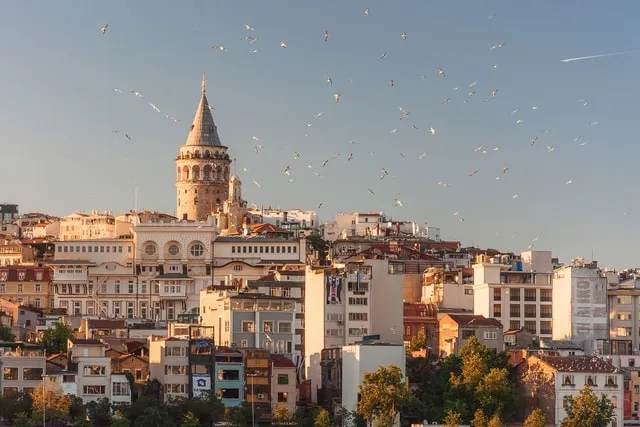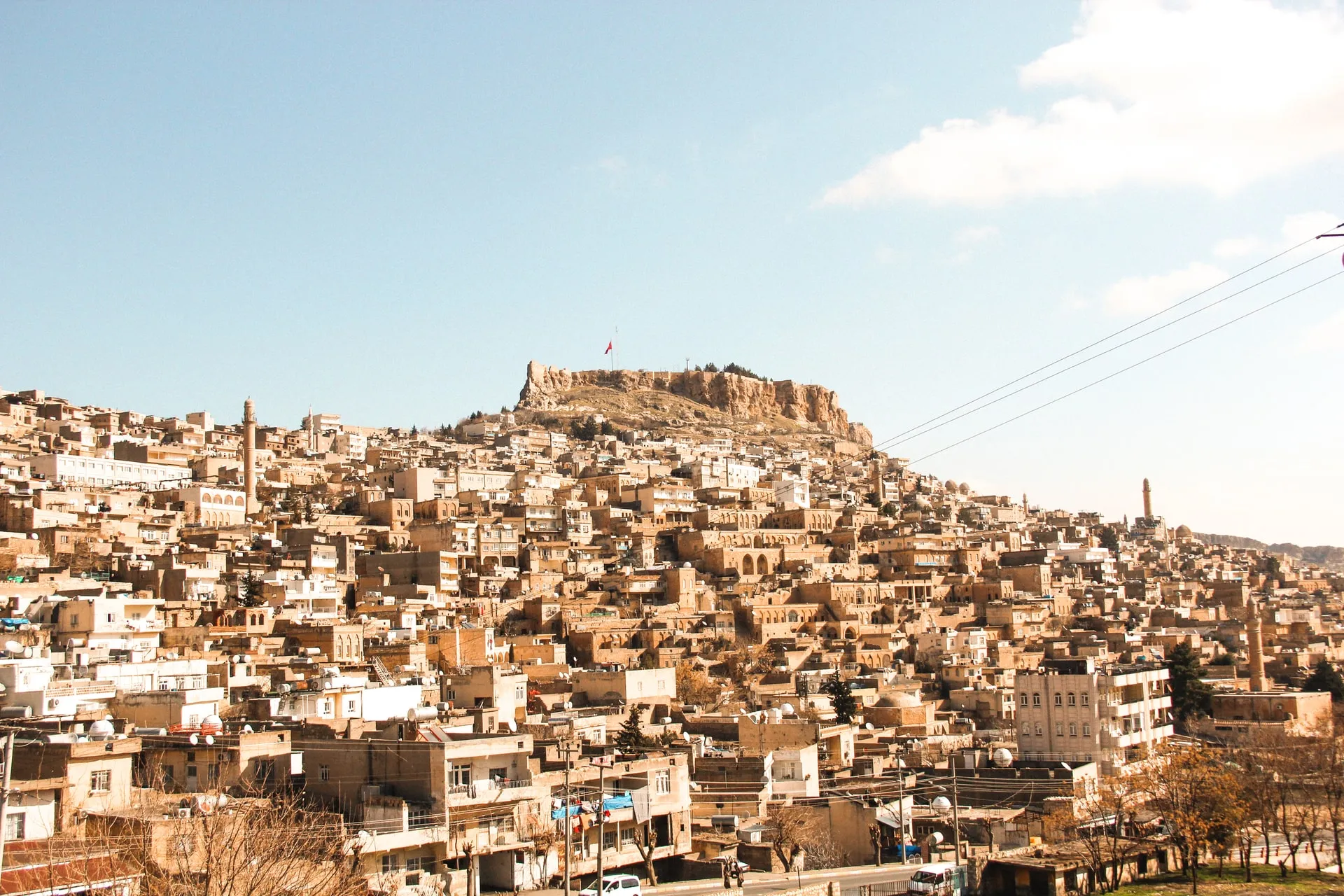Turkey, rich in history and a landscape that includes beaches and high mountains, has served as a gateway between Europe and Asia for thousands of years. Turkey is a richly diverse country due to its role as a trading and cultural exchange hub. The country's delicious culinary landscape and the many religious monuments and ancient sites bear witness to the wealth of culture and range of influences left their imprint at the crossroads where East meets West.

Istanbul, originally the capital of the Byzantine and Ottoman Empires, is a popular tourist destination, but there are many more beautiful places to visit. You may spend your time here living in boutique hotels inside caverns and soaring in hot air balloons over the strange terrain of Cappadocia, exploring the Greco-Roman civilization in Ephesus, or simply soaking up the sun at luxurious beach resorts along the Aegean Sea. The following are some of the best places to visit in Turkey in 2022.
1. Istanbul
Once the capital city of the Ottoman and Byzantine Empires, Istanbul is now Turkey's largest city and one of the world's largest. Istanbul spans both sides of the Bosphorus, a short strait connecting Asia and Europe, making it the earth's only city to straddle two continents. Istanbul is one of the world's top tourist attractions because of its impressive architecture, historical monuments, cuisine, shopping, nightlife, and cosmopolitan environment.
The Old City is home to most of the city's ancient sites, including the Hagia Sophia, Blue Mosque, and Topkapi Palace. New City is another primary place notable for its modern attractions, towers, and shopping malls. Beyoglu and Galata are prominent nightlife and entertainment districts, while the Bosphorus region is home to stunning palaces, waterfront homes, and urban parks.

2. Antalya
Antalya, located on the gorgeous Turkish Riviera on the Mediterranean coast, is a large, active city that welcomes travelers with various resorts, hotels, bars, and restaurants. Beautiful beaches and lush green mountains filled with ancient ruins frame the city's spectacular environment. Antalya has something for everyone, from swimming and sailing to mountain climbing, sightseeing, and family activities.
A stroll through Kaleiçi, the Old Quarter, transports you to the city's historical past, with views of the Roman gates, old city walls, , maze-like lanes, and historical landmarks such as the Clock Tower and gorgeous old churches, mosques, and temples. In the heart of the Old Quarter, Cumhuriyet Square is flanked by stores, cafes, Turkish baths, and street performers.
3. Mardin
Mardin, the capital city of the Mardin Province, is perched on a prominent hilltop overlooking the plains of Mesopotamia in southeastern Turkey. One of the region's oldest cities, Mardin is well renowned for its cultural richness and Old City of sandstone buildings that tumble down the hill.
Mardin's Old City is readily explored by foot. The maze of twisting lanes takes visitors through terraced dwellings and famous landmarks like the Deyrü'z-Zafaran Monastery, one of the world's oldest monasteries, and the Sultan Isa Medresesi, a medieval monument that initially served as an astronomical observatory. Zinciriye Medresesi, a 14th-century Islamic school, has lovely courtyards and artwork.

The Great Mosque, with its tall minaret, is difficult to overlook. Eventhough it is not open to the public, the citadel provides excellent photo opportunities. There are numerous stores selling pottery, silverware, leather, and traditional headdresses throughout the Old City.
4. Ephesus
The enormous ruin of Ephesus is a city of colossal monuments and marble-columned avenues that should not be overlooked. Ephesus is one of the most intact, still-standing ancient antiquity cities in the Mediterranean region. It is the site to experience what life must have been like during the Roman Empire's golden age.
The city's history extends to the 10th century BCE, but the important monuments you see now are from the Roman era when it was a bustling trade center. The Terraced Houses are among Ephesus's most recently unearthed and undoubtedly popular sights. These were the mansions of Ephesus' wealthiest people in the first century, and they were built in a modern Roman style.
Surprisingly, some residences included hot and cold bathrooms, marble flooring, and even heating systems. You'll find strange artwork, mosaics, and even handwritten love messages on the walls.
A visit to Ephesus would be incomplete without visiting the famous Library of Celsus. The library, which was built in 123 AD, was once one of the largest in the ancient world, ranking third after the libraries of Alexandria and Pergamum. The library has been renovated, allowing visitors better to appreciate its two-story design, columns, and capitals.
5. Pamukkale
Pamukkale's immaculate white travertine terraces ("Cotton Castle" in English) tumble down the slope like an out-of-place snowfield amid the verdant countryside, making it one of Turkey's most famous natural wonders. The massive and rambling ruins of Greco-Roman Hierapolis, an ancient spa town, sit scattered across the crest of this calcite hill and are a highlight of any journey to Turkey.
After exploring the historic theater and the relics of the city's agora, gymnasium, necropolis, and magnificent gates, you can swim in the mineral-rich waters that made this ancient spa town famous in the antique pool. Then, descend the travertine hill, wading through the pools of water in the higher terraces, to the small contemporary settlement of Pamukkale below. Visit at dusk, when the travertines shine as the sun sets below the horizon, for the best photos.
6. Cappadocia
The strange vistas of Cappadocia, high on the Anatolian plateau, resemble a fantasy world. Honey-colored rocks have eroded into sculptural forms like minarets, magic mushrooms, and Fairy Chimneys. In contrast, underneath, settlers have been busy carving out cave houses, churches, and monasteries from the soft volcanic rock – even entire subterranean towns – since the Bronze Age.
As earlier as 1800 BC, Hittites and other locals carved built underground tube complexes to protect themselves against invading Persians and Greeks. Christians fleeing religious persecution from Rome sought refuge in Cappadocia's tunnels and caves much later in the 4th century AD. Today, the region's natural features and historic attractions contribute to its popularity as a tourist destination.
While much of Cappadocia is in the province of Nevsehir, some of the region's major towns include Ürgüp, Göreme, Avanos, Ortahisar, and Mustafapasa. These cities have hotels, restaurants, nightlife options, and attractions, including museums, fairy chimneys, rock castles, underground tunnels, monasteries, old Greek villages, and handicraft markets. Some of the caves in the area are motels that cater to tourists.

7. Ankara
Ankara, Turkey's capital, is a vast, modern metropolis filled with government buildings, commercial businesses, universities, and international embassies. Ankara, located in the heart of the country and the Anatolia region, is an important transportation hub that connects nationals and tourists to other famous places in Turkey. Ankara, on the other hand, is not all commerce. This bustling metropolis also has some historical attractions and arts and culture.
Ankara, an old city, once inhabited by numerous cultures like Hittite, Greek, Roman, Byzantine, and Ottoman, is riddled with ancient structures and ruins that depict its history. The Temple of Augustus, the Citadel, and a Roman Theatre is the most significant. Throughout the city, there are numerous historical mosques. Anitkabir, an important twentieth-century landmark, is a mausoleum that houses the tomb of Turkey's first President, Mustafa Kemal Atatürk.
8. Pergamum
There are several Greco-Roman ruins in Turkey, but none are as beautifully situated as ancient Pergamum in modern-day Bergama. Pergamum's historic temple fragments now preside powerfully across a hilltop, once home to one of the ancient world's most famous libraries and the famed medical school established by Galen.
It's an incredibly atmospheric location to explore. The Acropolis area, with its theater built into the hillside, contains the most ruins and provides sweeping panoramic views of the surrounding countryside. The remnants of the city's renowned medical center can be found in the Asklepion neighborhood below. Pergamum is a fantastic place to visit if you want to get a real sense of living during the Classical period.
9. Patara
Patara Beach, which stretches for more than seven miles, is Turkey's longest and most stunningly magnificent beach - and also one of its most deserted. Breakers break along one border of this deep, vast stretch of pale sand; along the other are dunes and pine trees, marshes and lagoons, now a natural park rich in birdlife, so you're entirely encircled by water and nature, including endangered loggerhead turtles.
The beach is unspoiled and preserved in part because of the turtles and the remnants of the ancient city of Patara. According to history, these remnants were erected by Apollo's son at the back of the beach. These ruins include a theater, a parliament building (discovered buried in the sand in the 1990s), and the column-flanked remnants of the main thoroughfare. Apollo's temple is thought to still exist beneath the ground, unexplored.
10. Marmaris
Marmaris, one of Turkey's most popular coastal destinations, is surrounded by pine-clad mountains, sandy white beaches, turquoise waters, and old buildings. This gorgeous cruise port, located along the Turkish Riviera in southwest Turkey, is a tourist paradise with outstanding sightseeing options, water sports, fantastic restaurants, and a busy nightlife.
Visitors will be spoiled for choice in Marmaris because there is so much to see and do. A stroll through the cobblestone alleyways of the old area reveals the stunning architecture, and a visit to Suleyman the Magnificent's 16th century Castle. Several boat cruises take visitors on an exploration of the lovely bays and adjacent communities.
Marmaris' nightlife scene is one of the most dynamic in Turkey. From fast food to sophisticated dining, hundreds of restaurants serve cuisines worldwide. Bars and clubs may be located across the city and along the beaches. The Turkish Night Show venues, which include authentic Turkish food, mezes, and belly dance, are not to be missed.




